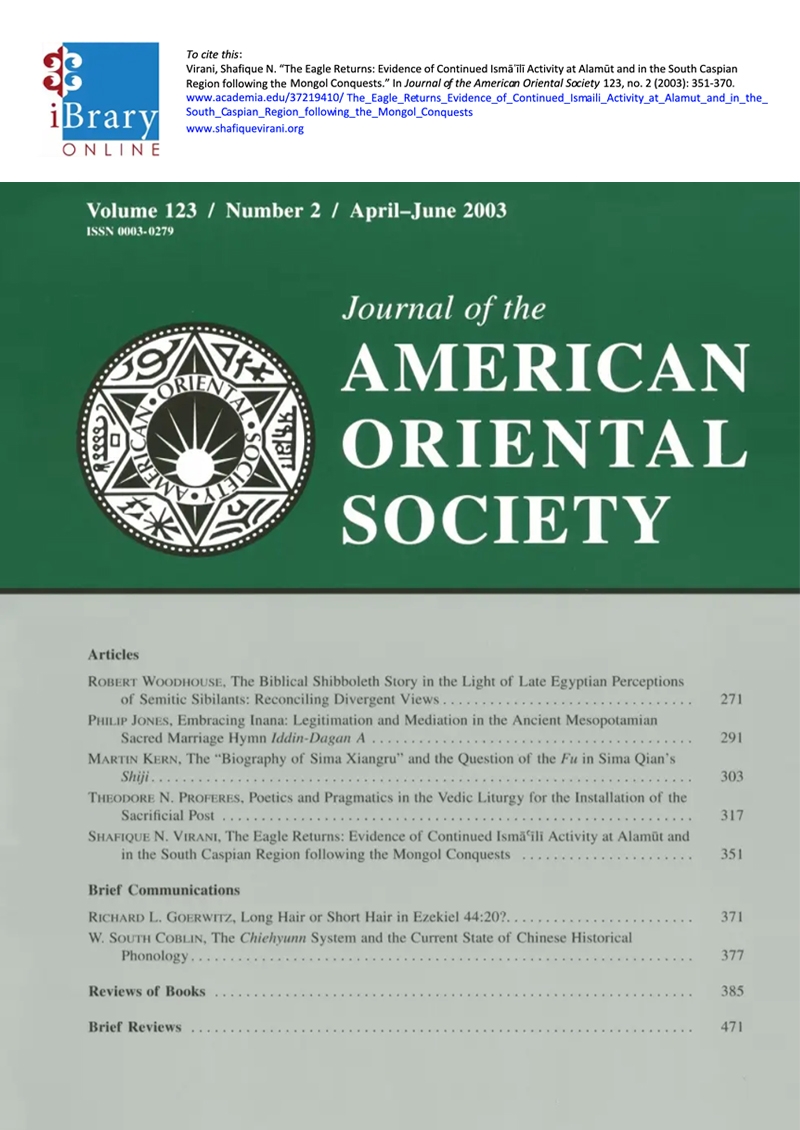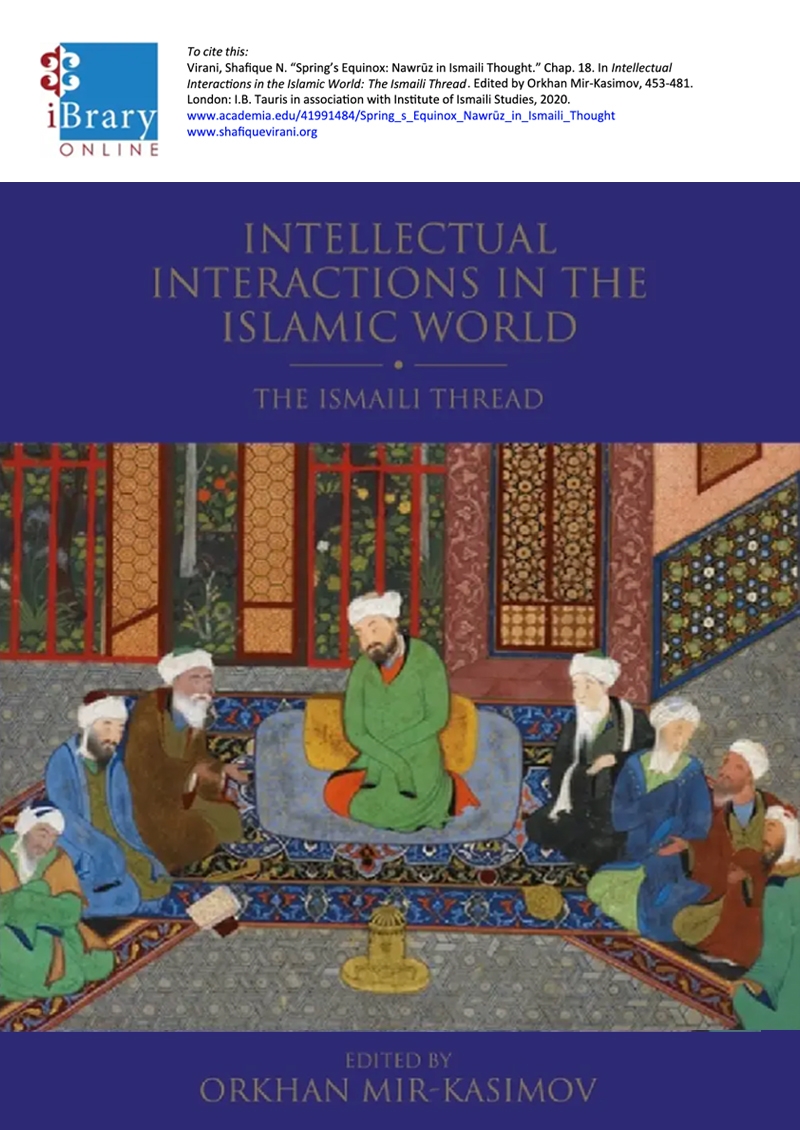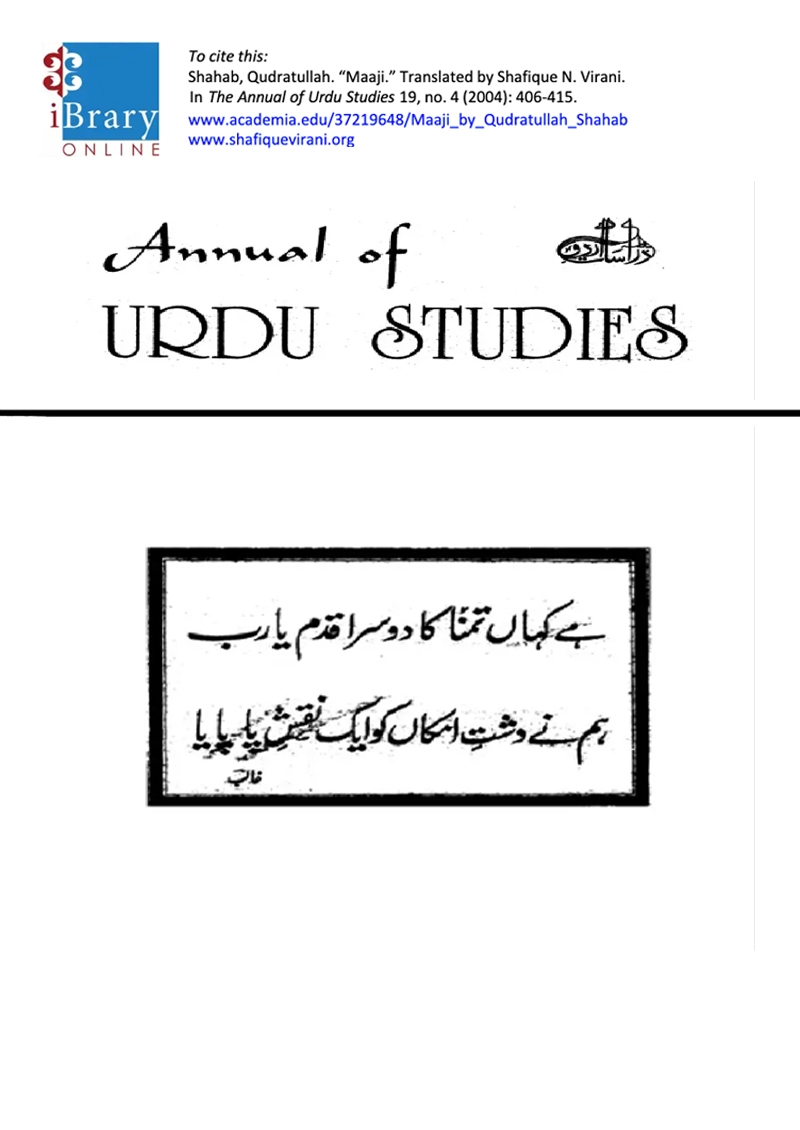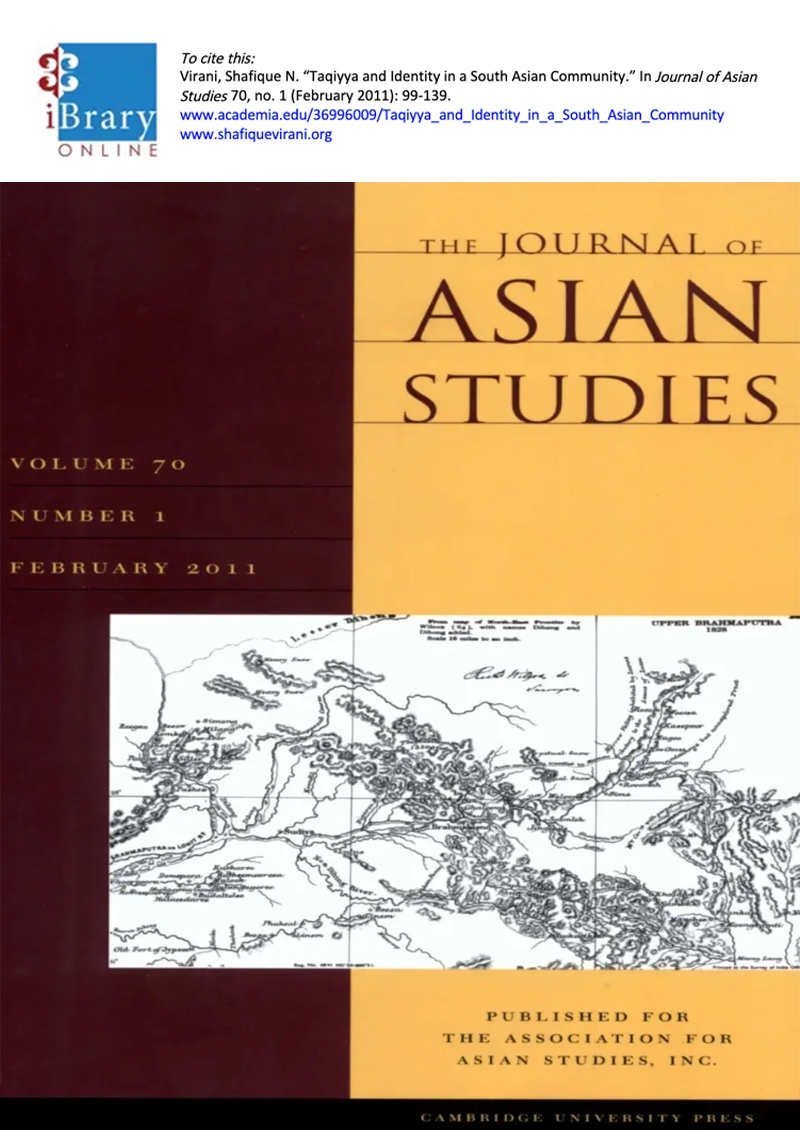Publication – English
The Eagle Returns: Evidence of Continued Isma’ili Activity at Alamut and in the South Caspian Region following the Mongol Conquests
Journal of the American Oriental Society, 2003
Abstract:
The catastrophic Mongol incursions into the heart of the Muslim world during the thirteenth century left a path of death and destruction in their wake. Though the assaults succeeded in vanquishing Baghdad, toppling the Muslim caliph himself, it is notable that the famous contemporary historian, ‘Ata-Malik Juwayni, does not describe this as the pinnacle of Mongol conquest. Rather, for this Sunni historian, the zenith and culmination of the Mongol invasion is the obliteration of the tiny rival enclave of the Ismailis, a Shi’i sect centered at the mountain fortress of Alamut. It is to this singular event that Juwayni dedicates the concluding one-third of his History of the World Conqueror. The Mongols sought a complete destruction of Alamut and the extermination of the Ismailis. Many of the Persian historians, led by Juwayni, believed that they were successful in this endeavor. Until recently, the complete extermination of the Ismailis in the face of the Mongol behemoth was also accepted as fact in Western scholarship.
In this article it is maintained that Ismaili activity in the region in the aftermath of the Mongol invasions was even greater than previously suspected. Inconsistencies and exaggerations in Juwayni’s testimony; a correction of his narrative based on other historians, including Rashid al-Din; and the evidence of regional histories, geographical tomes and inscriptions clearly point to sustained Ismaili presence in the region. This evidence is further supported by the fifteenth-century Nasa’ih-i Shah-rukhi, a hostile Khurasani source that clearly indicates that Alamut was a center of the Ismaili da’wa to which community funds were sent. The testimony of the Nasa’ih is supported by that of the da’wa literature of the Indian subcontinent, which provides very suggestive evidence that the residence of the Imam Islam Shah was Alamut. From this, it becomes clear that the south Caspian region continued, perhaps sporadically, as an important center of the Ismaili community for over a century after the Mongol irruption. The eagle had, so to speak, returned.
Cite this publication:
Virani, Shafique N. “The Eagle Returns: Evidence of Continued Ismāʿīlī Activity at Alamūt and in the South Caspian Region following theMongol Conquests.” In Journal of the American Oriental Society 123, no. 2 (2003): 351-370.
Share what you’re reading on social media
If you liked this, you may also enjoy reading




